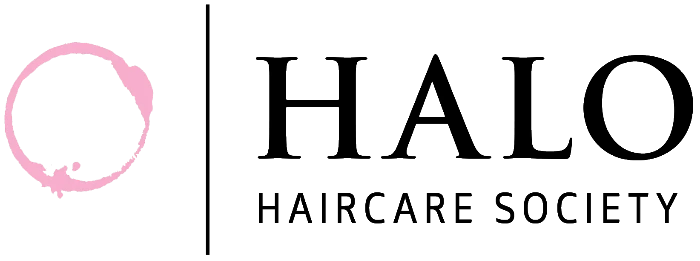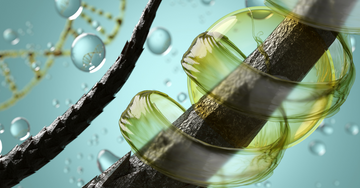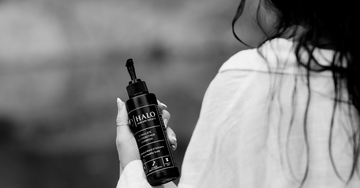Hair, Hormones and Growing Up: What Really Happens to Your Hair and Scalp
As hormones begin to shift in the pre-teen and teenage years, you may notice changes not only in your skin but also in your scalp and hair. These changes can feel sudden, confusing, and sometimes frustrating, especially when they affect how you feel about yourself day to day. If you’re reading this to understand your own hair, or if you’re here to help guide someone you care about, you’re in the right place. This is what I commonly see as a trichologist when hormones start to change during adolescence.
Understanding the Hormones Involved in Teen Hair & Scalp Changes
Hormonal shifts in adolescence aren’t just about mood or growth, they directly influence how your scalp behaves, how your hair grows, and even how your texture develops. Here are the key hormones at play and what each one actually does:
Androgens (Testosterone & DHT)
What they do:
-
Androgens increase during puberty in all genders (just at different levels).
-
They stimulate the sebaceous glands, which is why the scalp can suddenly become oilier.
-
Testosterone is converted into DHT (dihydrotestosterone) in the follicle.
-
If someone is genetically sensitive to DHT, it can cause follicles to slowly shrink.
How it shows up on the scalp/hair:
-
Oily roots
-
Flaking (as excess oil feeds the natural scalp yeast)
-
Breakouts near the hairline
-
Earlier-onset thinning in males
-
In some females: increased shedding or reduced volume if they have PCOS or other hormone imbalances
Estrogen
What it does:
-
Estrogen helps keep hair in the growth phase for longer.
-
It supports moisture balance in the skin, including the scalp.
-
It protects follicles from the effects of androgens.
How it shows up on the scalp/hair:
-
When estrogen levels are steady, hair feels thicker and more stable.
-
When estrogen fluctuates (common in early cycles), hair can feel drier or shed a little more.
-
Some texture changes may feel more dramatic when estrogen is shifting.
Progesterone
What it does:
-
Progesterone naturally counterbalances some androgen activity.
-
It helps regulate sebum production and supports calmer, less reactive skin.
How it shows up on the scalp/hair:
-
When progesterone dips (common in irregular early cycles), the scalp can suddenly feel oilier.
-
You might notice more frizz, scalp irritation, or breakout-prone areas near the hairline.
Growth Hormone (GH)
What it does:
-
GH supports cell turnover and regeneration, including hair follicles.
-
It’s essential for strong strands and healthy scalp function during the rapid growth years.
How it shows up:
-
Stronger growth spurts in both hair and nails
-
Hair feeling thicker or changing texture as follicles mature
-
Sometimes increased shedding during fast growth phases as follicles “reset”
Insulin & Blood Sugar Hormones
What they do:
-
Insulin influences the activity of androgens.
-
Imbalances (very common in teens) can worsen oiliness or trigger scalp inflammation.
How it shows up:
-
Oily scalp
-
Breakouts around the hairline
-
Flaking or irritation that gets worse with high-sugar diets
-
For those with PCOS: insulin resistance can increase androgen activity, worsening scalp oiliness or shedding
Cortisol (Stress Hormone)
What it does:
-
Cortisol naturally rises with school stress, social pressure, lack of sleep, or emotional changes.
-
High cortisol can interrupt the hair growth cycle and cause shedding.
How it shows up:
-
More hair fall during stressful periods
-
Increased scalp sensitivity
-
Texture looking rougher, flatter, or more frizzy
-
Slower recovery from breakage
How These Hormones Work Together
During adolescence, these hormones don’t rise gently, they spike, dip, and fluctuate constantly.
This is why teens might see:
-
Oily scalp and dry ends
-
Sudden frizz or new curl patterns
-
More noticeable shedding during stressful periods
-
Flakes even when they’re washing regularly
-
Texture that looks different month to month
When you understand which hormone does what, it becomes much easier to recognise what’s normal and how to support the scalp through these changes.
Why Hormones Affect the Scalp and Hair
Hormones influence the sebaceous glands in the scalp, which control how much oil (sebum) is produced. When these glands become more active, it can lead to:
-
An oily scalp that feels greasy quickly, even after washing
-
Ends that remain dry or brittle because oil doesn’t always travel evenly down the hair shaft
-
Shifts in texture, such as frizz forming as new curl patterns develop, or curls loosening and dropping into waves
Another key hormone is testosterone and its by-product, dihydrotestosterone (DHT). In people who are genetically sensitive to DHT, hair follicles can begin to shrink over time, leading to thinning or shedding. This is why some males may notice changes in the hairline or crown earlier, while females are less likely to see this until later in life. For females with conditions like polycystic ovary syndrome (PCOS) or endometriosis, hormonal fluctuations can trigger scalp oiliness, flaking, or even thinning hair at a younger age.
Common Changes You Might Notice
-
Oily scalp and flat roots – hair feels heavy or greasy soon after washing
-
Dry, rough ends – especially noticeable on longer hair
-
Flaking or dandruff – caused by excess oil feeding yeast that naturally lives on the scalp
-
Breakouts near the hairline – triggered by excess oil or product build-up
-
Texture shifts – frizz appearing as hair transitions into a new curl pattern, or curls dropping into looser waves
-
Thinning or shedding – more common in males with a genetic predisposition, but possible in females with certain hormonal conditions
How to Wash Your Hair Properly
How often you cleanse and how you do it are equally important. A correct wash routine keeps follicles clear, prevents buildup, and supports healthy growth.
- Brush your scalp and hair with a boar bristle brush before washing. This helps distribute your nutrient-rich natural oils down the hair shaft, acting as a natural conditioner for your ends. Brushing also lifts environmental particles and product buildup from the follicles, creating an even canvas for your wash. At the same time, it gently stimulates blood flow to the scalp, supporting the delivery of nutrients that help your hair stay healthy and strong.
-
Wet hair thoroughly before applying shampoo. Water helps loosen surface oil and buildup.
-
Emulsify shampoo in your hands with a little water before applying it to your scalp. This helps spread the product evenly.
-
Massage for two minutes using your fingertips, not your nails. Focus on reaching all areas of the scalp, not just the crown.
-
Rinse thoroughly. If shampoo is not rinsed well, cleansing agents can remain attached to oil and dirt, drying back into the hair and trapping debris even after washing.
-
Double cleanse if needed. The first wash removes oil and buildup, the second gently cleanses the scalp and hair properly.
-
Apply conditioner mainly to the mid-lengths and ends. If your scalp feels dry, you can use a scalp-friendly conditioner like Strengthen and Shine. Smooth it through until hair feels slippery between your fingers.
-
Rinse again until the hair feels light and clean. Conditioner left behind can also trap dirt or residue.
Brushing and Daily Maintenance
Between washes, gently brush with a boar bristle brush from scalp to ends. This helps lift product residue, dust, and environmental particles from the scalp while distributing natural oils evenly through the hair. It helps hair feel fresher for longer and maintains scalp balance.
Make sure to keep your tools clean between wash days to stop transferring dirt na doil back into your hair. Read our brush cleaning guide here.
When detangling wet hair, use a wide-tooth comb like our partner and style. Start from the ends and work upwards to avoid breakage. Hair is at its most fragile when wet, so be patient and gentle.
Keep a Scalp-Friendly Routine
Wash your hair as often as needed to feel clean. For some, that might be daily, while others may prefer every second or third day. Use a shampoo that suits your scalp type. If flakes or oil are a problem, a gentle anti-dandruff shampoo like Trichobarrier once or twice a week can help balance oil production and reduce flakes.
Avoid applying heavy oils or butters directly to the scalp. These can block follicles and feed the malassezia yeast that contributes to flaking. Always rinse thoroughly to prevent residue from building up.
Balance Oiliness and Dryness
It’s normal for the scalp and ends to have different needs. Treat them separately if necessary.
-
Use lightweight cleansing on the scalp and hydrating care on the ends.
-
Don’t skip conditioner even if your scalp feels oily; your ends still need moisture.
-
Keep pillowcases and hair tools clean, as oil and product residue can transfer back onto your hair and scalp.
Support Hair From the Inside
A balanced diet rich in protein, iron, zinc, and vitamins supports healthy hair growth. Staying hydrated helps regulate oil production and supports overall skin health. If menstrual cycles are irregular, or if there are symptoms of hormonal conditions like PCOS, seek advice from a healthcare professional for early support.
Foods That Support Hormone Balance
What you eat during adolescence can make a noticeable difference to both scalp balance and overall hormone regulation. While food alone cannot treat medical conditions, the right nutrients help support more stable hormones, healthier skin, and stronger hair growth.
What to Include
Balanced meals with protein
Protein supports hair structure, blood sugar stability, and hormone production. Good options include eggs, Greek yogurt, tofu, tempeh, chicken, legumes, and lentils.
Iron rich foods
Iron helps carry oxygen to the follicles and supports energy and hormone health. Include foods such as leafy greens, lentils, beans, tofu, pumpkin seeds, and lean meats if you eat them. Pair with vitamin C rich foods like berries, citrus, kiwifruit, or capsicum to help absorption.
Healthy fats
Omega 3 fats help regulate inflammation and support hormone signalling. Include flaxseeds, chia seeds, walnuts, avocado, olive oil, and oily fish if included in the diet.
Zinc containing foods
Zinc supports oil regulation, immune health, and healthy skin and scalp function. Good sources are pumpkin seeds, chickpeas, beans, nuts, and seafood.
High fibre carbohydrates
Fibre helps balance blood sugar and supports the removal of excess hormones through digestion. Choose whole grains, oats, quinoa, brown rice, fruit, vegetables, and legumes.
Magnesium rich foods
Magnesium supports stress hormones, sleep, and healthy nervous system function. Foods include leafy greens, nuts, seeds, cacao, bananas, and whole grains.
Hydration
Adequate water intake helps support oil balance on the scalp and general skin health.
What to Limit or Avoid
Highly processed foods
Foods high in additives, preservatives, and hydrogenated fats may worsen inflammation and can contribute to breakouts and an oiler scalp.
High sugar snacks and drinks
Frequent spikes in blood glucose can increase androgen activity and oil production on the scalp. Limiting sugary drinks, lollies, bakery items, and ultra sweet cereals can help keep hormones more stable.
Excess dairy for those who are sensitive
Some teens notice increased breakouts or oil production with higher dairy intake, particularly skim milk. If dairy seems to worsen symptoms, try reducing it for a few weeks and monitor any changes.
Fast food and fried foods
These can increase inflammation and worsen scalp oiliness and breakouts, especially around the hairline.
Very low calorie diets
Restricting food intake can disrupt hormones, slow hair growth, and increase shedding. Teens need consistent nourishment for balanced hormones and strong, healthy hair.
Care for Changing Textures
Hormonal changes can alter your curl pattern, creating frizz or new waves. Be patient while your hair adjusts.
-
Use a leave-in conditioner or lightweight curl definer, like our Bounce Balm Curl Cream on damp hair to shape and smooth texture.
-
Let your hair air dry or use a diffuser on low heat.
-
Avoid brushing once hair is dry to prevent frizz.
-
Try heat-free rollers to create even shape and reduce damage from daily styling.
Quick Guide: Actionable Tips
Oily scalp with new frizz or curls forming:
Cleanse gently but more often. Massage shampoo into the scalp for a full cleanse and rinse thoroughly. Apply Heat Halo - Smooth and Shine Serum on damp hair to smooth frizz without flattening texture.
Oily scalp with dry ends:
Focus Trichobarrier shampoo on the roots, then condition the mid-lengths and ends until they feel soft and smooth.
Flaking or dandruff:
Use Trichobarrier or another gentle anti-dandruff shampoo once or twice a week. Massage it in and leave for a minute before rinsing. Avoid scratching flakes with your nails.
Texture changes (frizz, new waves or curls):
Support your new texture with hydration and styling. Apply leave-in Bounce Balm Curl Cream and allow it to dry naturally.
Hair loss (predisposed to androgenic alopecia):
Start plant-based vasodilation early and consider natural DHT blockers such as saw palmetto or pumpkin seed to help support follicle health. You'll find these in our Stimulate and Strengthen Shampoo and Rescued By Range
Styling Confidence and Everyday Tips
Even with the best care, some days your hair won’t behave. Here are a few practical ways to manage it:
-
If your roots feel oily but you don’t have time to wash, use a small amount of Rejuvenate Dust mixed with water and applied at night works well, then brush out in the morning with a boar bristle brush.
-
If frizz takes over, scrunch in a small amount of Silk Elixir
-
If curls or waves look uneven, twist small damp sections and let them air dry for more definition.
-
If hair feels flat from oil, try a loose bun with a claw clip, braid, or half-up style. Avoid tight styles that pull on the hair, as this can cause traction alopecia.
-
If you’re self-conscious about scalp visibility, change your part slightly to one side for more natural coverage.
-
Always keep brushes, combs, and accessories clean to prevent product and oil buildup.
Final Thoughts
Hormonal changes affect everyone differently, but your scalp and hair are always part of the story. Whether you’re managing oiliness, dryness, flakes, frizz, or shedding, the key is to treat your scalp gently, nourish your body, and give your hair the care it needs. These habits will not only make your hair feel healthier now but will set you up for strong, balanced hair in the years ahead.




